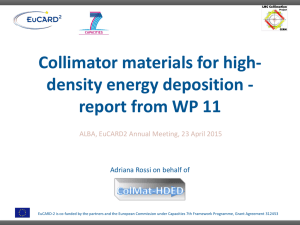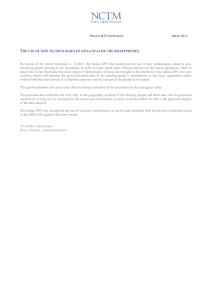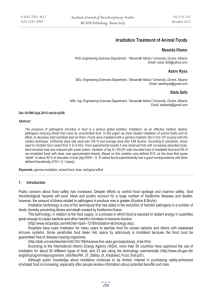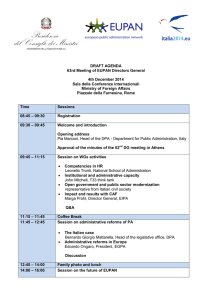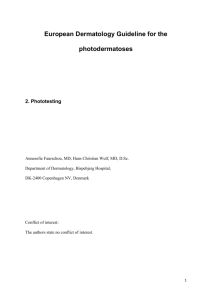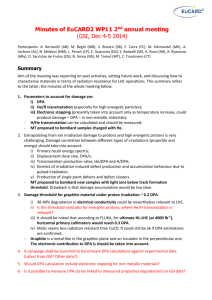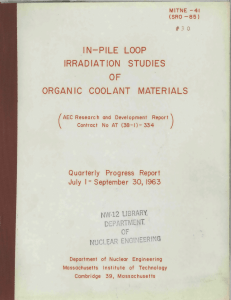WG1 Weds pm SG Roberts
advertisement
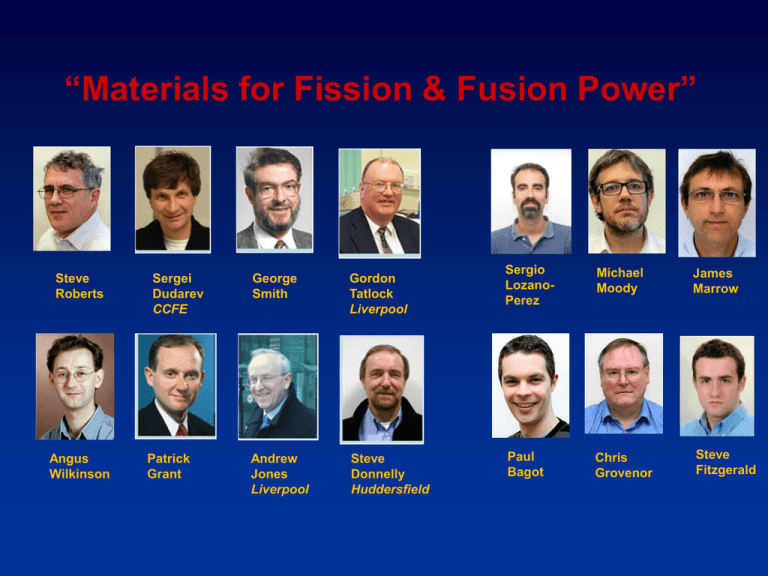
“Materials for Fission & Fusion Power” Steve Roberts Angus Wilkinson Sergei Dudarev CCFE Patrick Grant George Smith Gordon Tatlock Liverpool Andrew Jones Liverpool Steve Donnelly Huddersfield Sergio LozanoPerez Michael Moody James Marrow Paul Bagot Chris Grovenor Steve Fitzgerald “Materials for Fission & Fusion Power” MFFP: Hot topics • ODS alloy processing – Microstructural development – Joining – Novel processing • Small-scale <-> large scale mechanics – – – – • • • • plasticity and fracture; temperature effects “pure” materials Dispersion strengthened materials Radiation damaged materials Alloy stability under irradiation Crack chemistry and fracture Helium and radiation damage Neutrons Ions ( Protons)? Irradiation effects 1-100 displacements per atom 100’s ppm helium Transmutation radioactivity Fast neutron test reactor, hot cells …or… Irradiation effects 1-100 displacements per atom 100’s ppm helium Transmutation radioactivity ~0.5 - 4 mm H+ , He+ 2 - 30 MeV Fe+ / W+ Steel, Tungsten, …. electrons ions In-situ irradiation of Fe at 300°C 25 nm Dose increment: 6~10 dpa; viewed 40 x real time – these are interstitial loops with b = ½ [-111] Oxide – Dispersion - Strengthened alloys: radiation resistance No irradiation 1 dpa Particles stable, and no radiation damage was visible below 1 dpa ODS PM2000, RT irradiated with 150 keV Fe+, room temperature 0.5 dpa 2 dpa Atom-Probe: Radiation-induced clustering in Fe-Cr alloys Atom probe tip 300°C, 2MeV Fe+ 1dpa Fe-Cr alloy Implanted depth ~5001000nm • FIB “lift out” preparation Pt post 1mm (Fe not shown) Fe-3at.%Cr alloy • Cr clustering observed in Fe-3%Cr (associated with C) • Fe-3%Cr should be STABLE according to equilibrium phase diagram • Cr clusters produce hardening and embrittlement Clusters only 2nm thick slice Clusters 58nm 42 nm Mechanical effects: dose rate High dose rate Low dose rate Hardness (GPa) Low dose rate High dose rate High dose rate Unimplanted Fe – x% Cr At lower dose rate, Cr clusters form on dislocation loops - much greater hardening effect Low dose rate Irradiation effects in W: Nanoindentation unimplanted He+ He+ 2 MeV W+ Hardness (GPa) He+ W++He+ W+ unimplanted W+ W+ He+ Micro-mechanical Testing Irradiated 5 mm Un-irradiated 50mm Microcantilevers produced by Focussed Ion-Beam Micro-mechanical Testing: Tungsten 1mm 20mm Unimplanted W Implanted W&He Implanted (GPa) 2.0±0.9 3.1±0.7 3.1±0.7 (4 Cantilevers) (4 Cantilevers) (7 Cantilevers) Fracture Toughness >29±12 >15±3 17 Yield Stress (MPa√m) (0/2 Cantilevers) (0/4 Cantilevers) (1/7 Cantilevers) Active Material: Fe-6%Cr N-irradiated to 1.7 dpa at 288°C, dose rate ~1 x 10-7 dpa/s 1mm 0.1mm Activity: 37MBq ▫ 66 cantilever beams with depths from 0.82 to 7.3μm ▫ Also made in ▫ Ion-irradiated Fe-6%Cr, same dpa & temperature ▫ Unirradiated FIB work at CAES, Idaho Simple YieldFe-6%Cr Stress Micromechanical testing – yield stress 7.00E+09 Neutron Irradiated Ion Irradiated 6.00E+09 Un-Irradiated Ionirradiated Yield Stress (Pa) 5.00E+09 4.00E+09 Power (Neutron Irradiated) Power (Ion Irradiated) Power (Un-Irradiated) 3.00E+09 2.00E+09 1.00E+09 0.00E+00 0.000 1.000 2.000 3.000 4.000 5.000 Beam Depth (μm) 6.000 7.000 8.000 Micro-mechanical Testing: Temperature Si: 500°C Si: 700°C -100°C +750°C World-unique Oxford Nuclear Materials: Capabilities • Electron Microscopy – Defects & damage – Chemical microanalysis – In-situ with ion-beam, heating • Atom-probe tomography – Atomic-scale chemistry • Focussed ion-beam sectioning – Selected local areas for EM and APT • Small-scale mechanics – Small active specimens – Thin ion-irradiated layers – -100°C to +750°C • Modelling (with CCFE) – Defects – Mechanics – Transmutation paths • Links to “radiation-effects” projects internationally – NNUF – NEUP/IRP – (FAFNIR), (TRITON)
